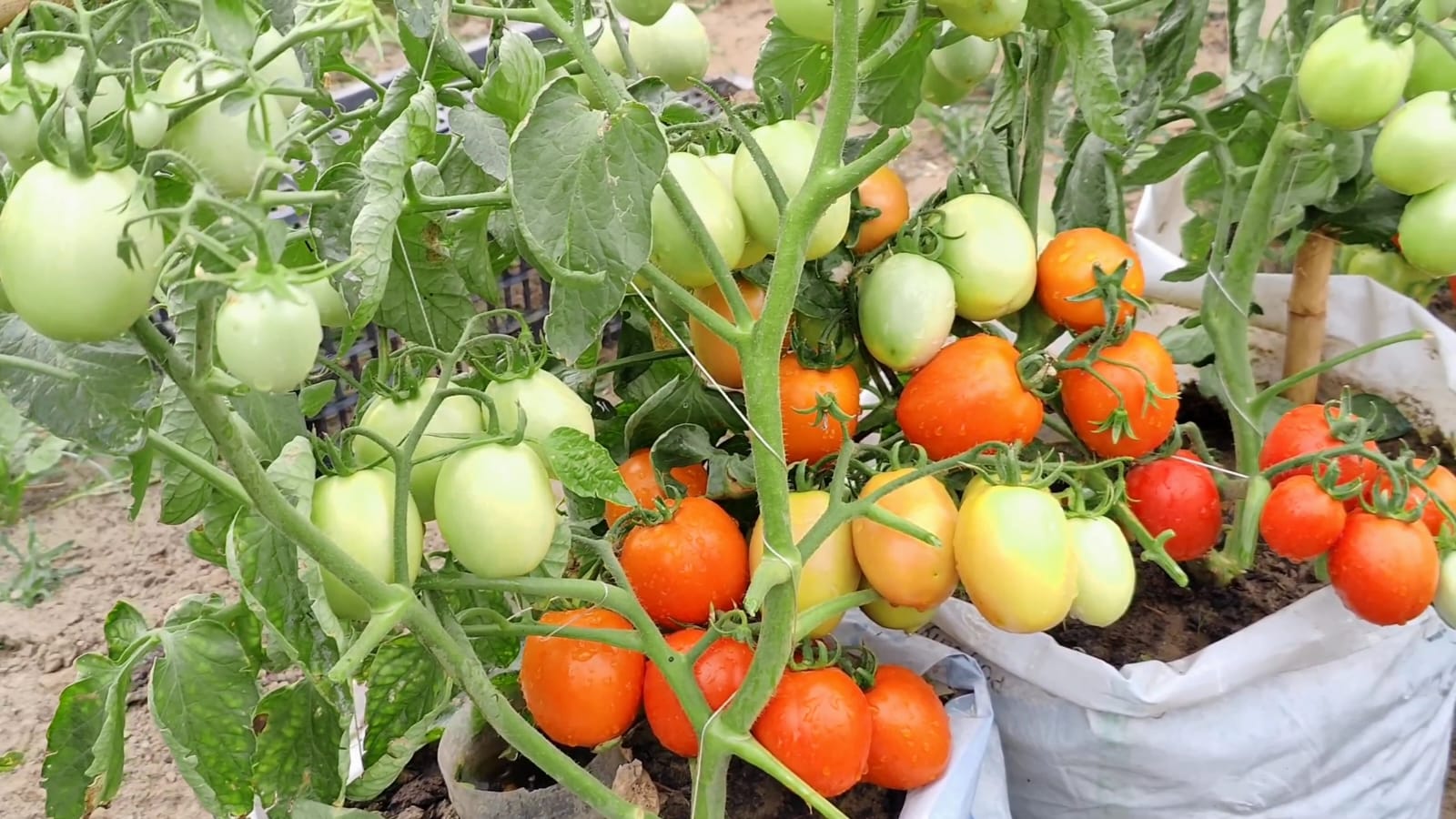You’ve come to the right place if you want a garden full of juicy, fresh tomatoes. The key to a big, healthy tomato harvest starts with getting your garden bed ready long before the first flower shows up. You can make sure your plants do well all season by giving them the right base.
Let’s go through each step of this process together, from making soil that is full of nutrients to planting your plants in the best way possible.
Step 1: Enrich the Soil with Vermicompost
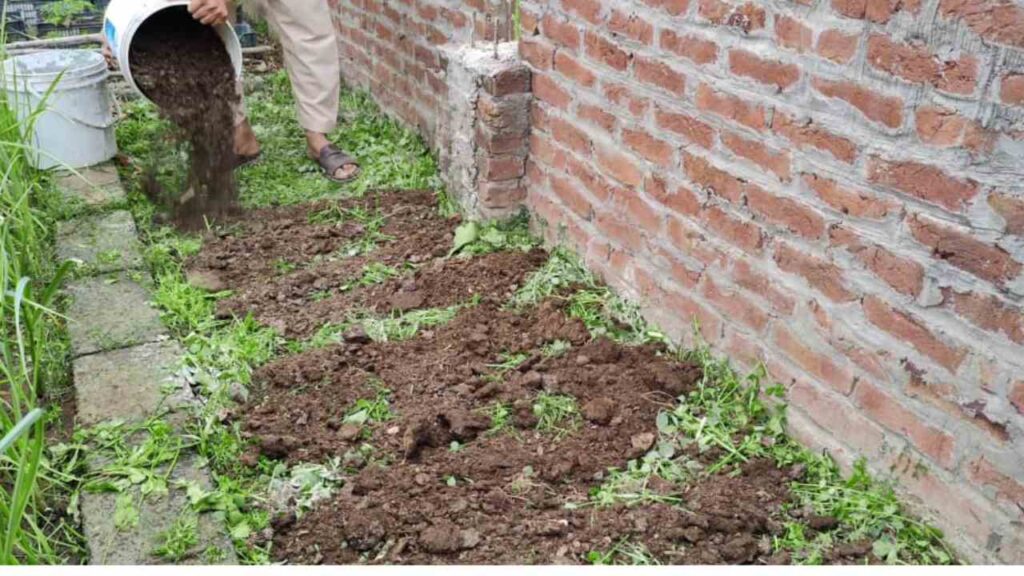
The most important thing you can do before planting is get the ground ready. Not just any compost will do; use vermicompost, one of the best organic soil improvers available.
What is vermicompost?
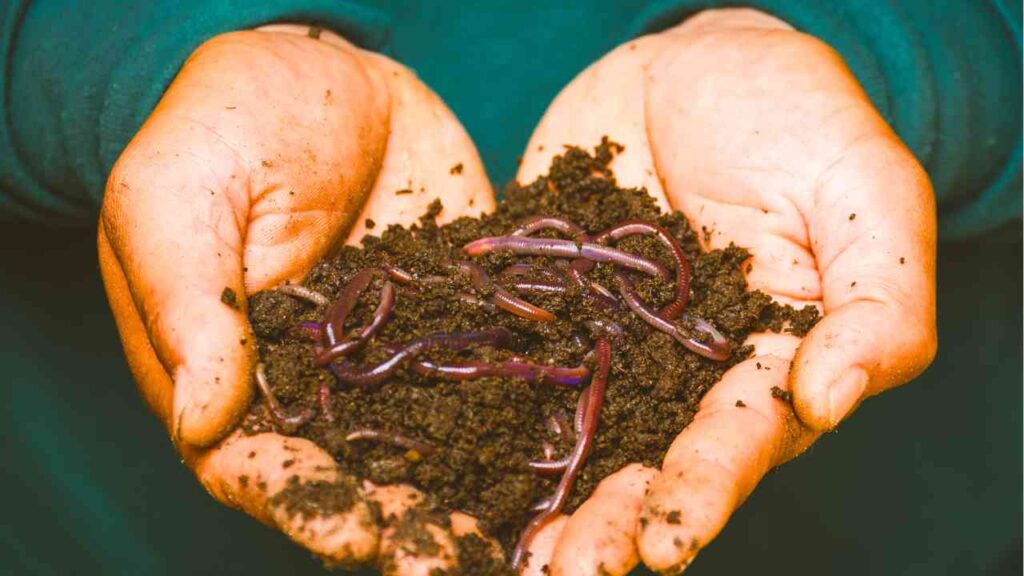
Worm casts, or essentially worm poop, are the basis for vermicompost production. It is full of nutrients that plants can use right away.
Microbes that are good for the earth and improve its biology
Organic stuff that helps both keep water in and let it drain
It makes the soil just right, with the right amount of water and air. Tomato plants love this. Spread at least an inch or two of it across your bed and mix it into the top 6 to 8 inches of dirt to use it. The mixture helps your tomato plants get off to the best start possible.
Step 2: Make big holes that are well spaced.
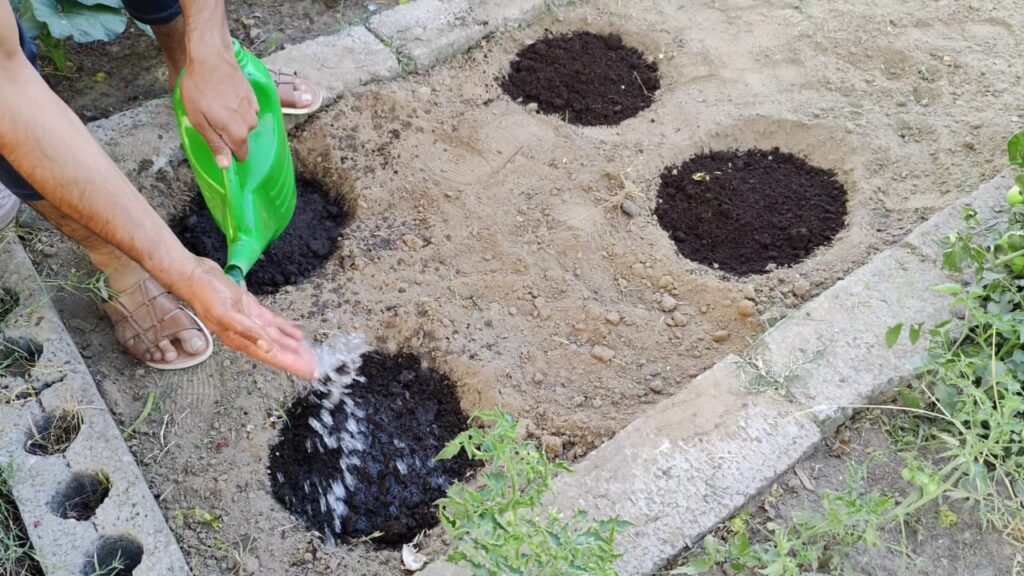
Make room for the seeds once your bed is ready and full of good things. Based on how big the tomato plant you’re growing will get and how much space you have, you should dig holes 10 to 12 inches apart.
Why dig down?
Tolons are unique in that they have the ability to grow roots all the way down their stems. You’ll help the plant grow a much stronger and wider root system by burying it deeply. This leads to
Better access to food and water
Plants that are stronger and can hold more fruit
Better ability to handle hot or dry spells
It might seem easier to plant shallowly, but you’ll miss out on a healthier, more effective plant if you do that.
Step 3: Add fish meal to make the food healthier for longer.
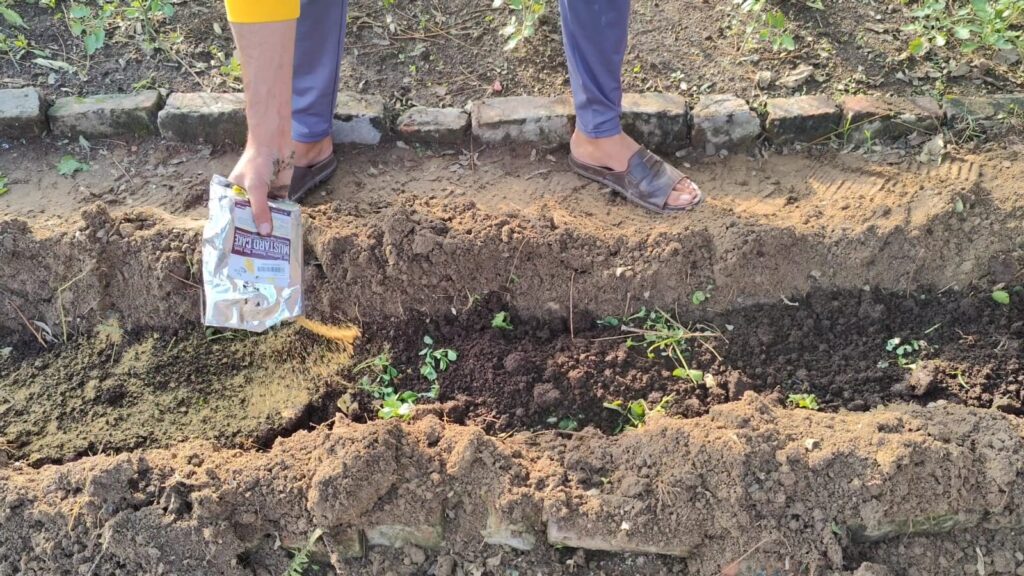
Before you put your plants in their holes, you should give them a boost of slow-release nutrients. This procedure can be done with fish meal.
Add about two tablespoons of fish meal to each planting hole and mix it in just a little. There’s a lot of: in this organic manure
Nitrogen: to grow leaves and green plants
Phosphorus—for strong root growth and flower production
Fish meal feeds your veggies for a long time because it breaks down slowly. This means you won’t need as much fertilizer later, and your plants will be healthy.
Step 4: Get the seedlings ready (Do Not Skip This!)
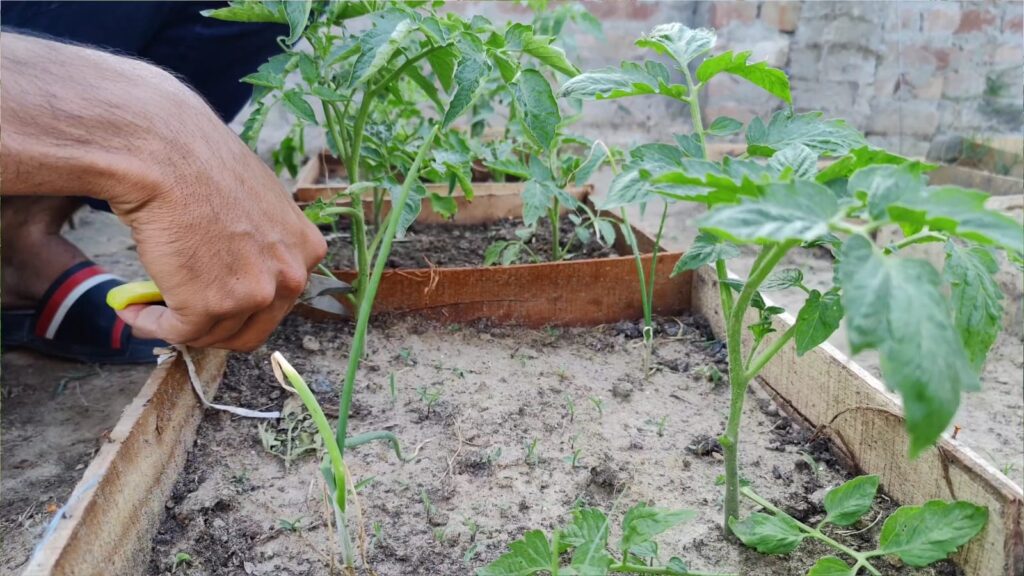
Take a minute to get each sprout ready before you move your tomatoes. At first, carefully pull off the lower leaves from the stem. These are any leaves that touch or are below the dirt line.
Why take off the lower leaves?
Fungal diseases can easily spread to leaves that come into contact with the ground. Taking them off:
Lowers the risk of getting an infection
Helps the air move around the plant’s base.
gives the plant the chance to focus on rooting
This little action can have a big effect on the health of the plant.
Step 5: Transplant Deep and Firm
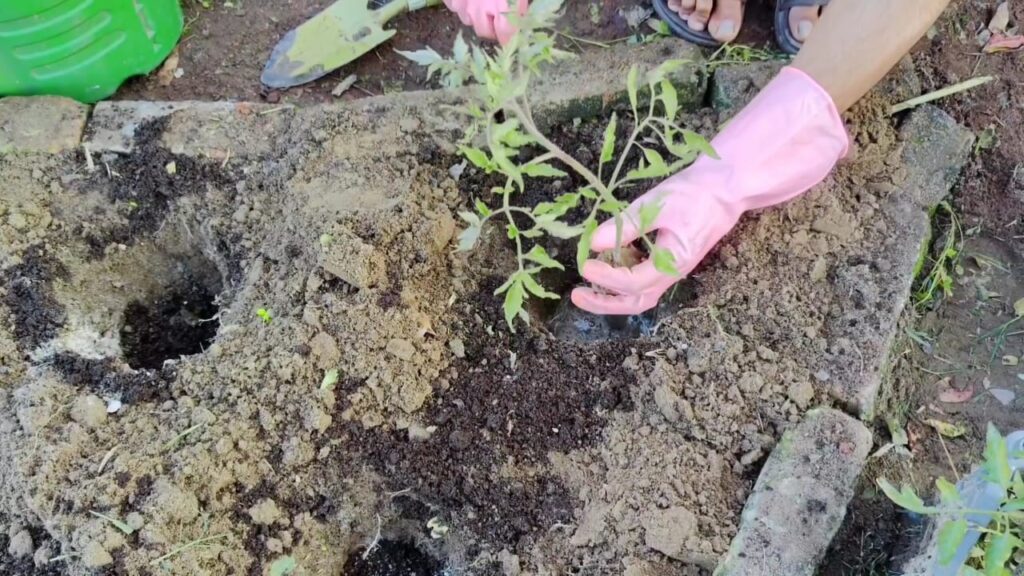
You’re ready to move now! Put a plant in its hole and bury it deeply so that only the top few sets of leaves are showing. Next, make small holes in the dirt around the plant’s base.
This method of planting deeply supports the growth of extra roots along the buried stem, which makes the plant more stable and nutrient-hungry.
There should be no air spaces around the roots. This procedure will help the plant settle down quickly.
Step 6: Water deeply and carefully.
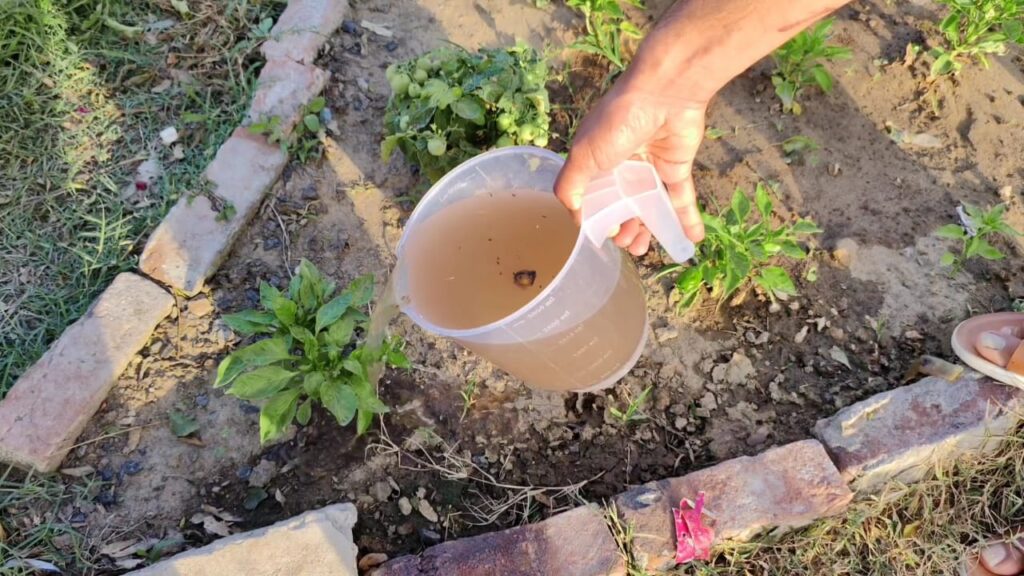
After you put in your tomatoes, you should give them a drink. Soak the earth around each plant well and evenly with water. The moisture helps the earth settle, gets rid of any air pockets, and gives the roots of new plants the water they need.
Watering tips:
Keep the dirt moist all the time, especially for the first week.
Do not water too much; soggy dirt can cause root rot.
Water the plant’s base to keep the leaves from getting wet, which can cause fungus problems.
Tomatoes need a steady amount of water, but not too much all at once. It’s better to say “even and consistent” than “drench and forget.”
The Payoff: Strong Growth and a Tomato-Filled Season
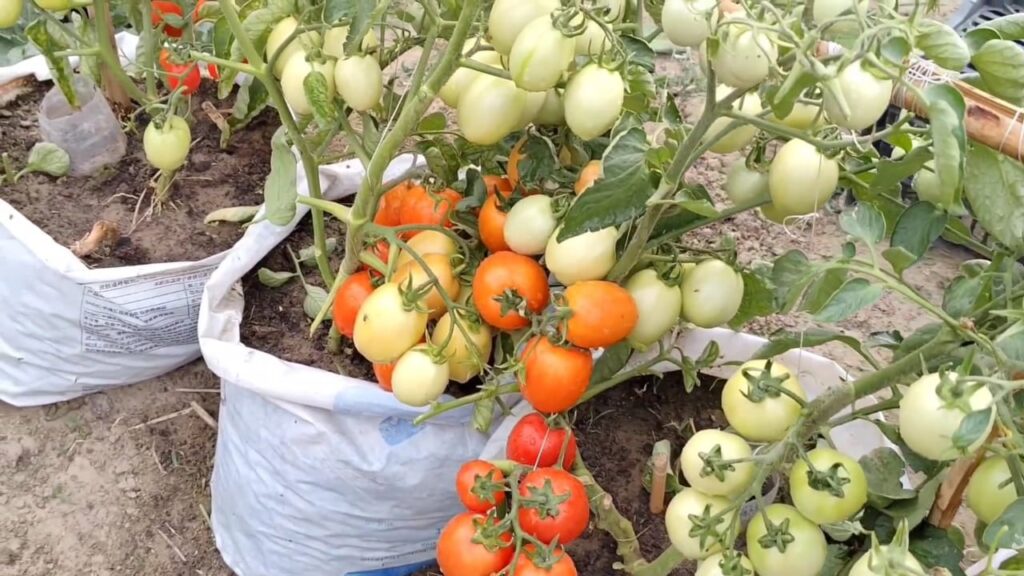
Vermicompost that is high in nutrients, deep planting, and slow-release fish meal make the best conditions for growing tomatoes. These things will be your trees:
Having deep roots
Full of nutrients
Not prone to disease
Better able to deal with bugs and weather stress
If you give your tomato plants regular care and attention, they’ll soon be strong, healthy, and full of tasty fruit.
Last Thoughts: Be smart and harvest a lot
It doesn’t have to be hard to garden. The simplest ways, like using organic compost and planting deeply, can work the best. If you do these things, your tomatoes will give you a big, lovely crop.
Would you like more planting tips like this? Stay here, click “Like,” “Share,” and “Subscribe,” and become a part of our growing group of home growers. Let’s grow something wonderful together!

